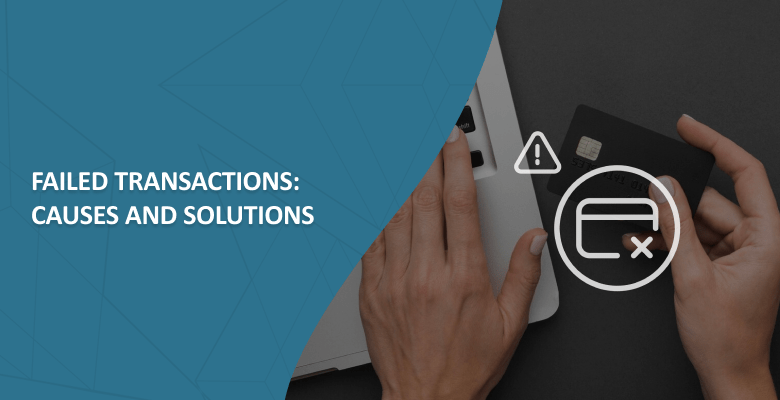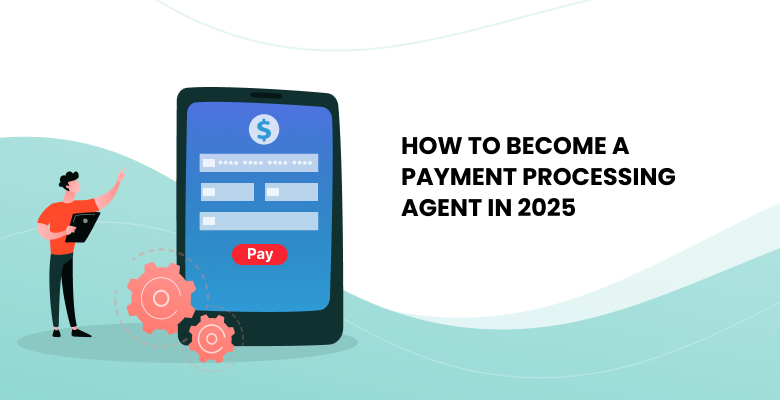
One thing that makes every business’s blood run cold is a high rate of transaction failure. Not only does it influence the conversion rate, reducing the company’s overall revenue, but it also lowers customer experience and causes poor bank relationships, leading to increased processing fees.
That is why, when high failed transaction numbers are spotted, companies should sound the alarm right there and then. But have no worries; in this article, we’ll explain why failed transactions occur and how to overcome them efficiently.
What is Transaction Failure?
The term failed transaction indicates a payment on a merchant’s website or application that was not processed successfully. The percentage of transaction failure over a specific timeframe serves as an indicator of potential issues that merchants should address.
Why do Transactions Fail?
Transactions can fail for numerous reasons. The specific cause may vary depending on the type of transaction and the parties involved. The label “transaction failed” has two primary grounds behind it: soft declines and hard declines.
Hard decline occurs when the customer’s issuing bank rejects the payment due to non-negotiable reasons such as card expiration, invalid card number, or a reported stolen card. This type of transaction problem is definitive and permanent, meaning the transaction is unsuccessful under any conditions.
In turn, a soft decline indicates that the acquiring or issuing bank temporarily denied the transaction. These declines are typically related to issues that can be addressed, such as an error on the payment provider’s side, the provider’s slow response rate, daily spending limits, etc. It allows the transaction to be approved once the issues have been resolved or by another acquirer or issuer.
Failed Transaction: Main Reasons
LexisNexis Risk Solutions estimates that failed payments cost the global economy $118.5 billion annually. This indicates a severe problem in the online business sector that needs to be dealt with. To overcome this issue, merchants need to understand the process behind transaction failure. Below are five common transaction failed reason.
Payments declined by card issuers
If the card issuer declines the transaction, there is little, if anything, the merchant can do to proceed with the transaction. There are several reasons why an issuing bank may refuse a payment. They include:
- Insufficient funds: lack of funds in the customer’s account to cover the purchase.
- Incorrect payment information: incorrect details, such as account numbers, card numbers, or wallet addresses.
- Expired payment method: the customer’s payment method has become invalid.
- Transaction limits: the customer’s payment limit was exceeded.
- Account closure: the bank account or payment account linked to a digital payment system is closed or inactive.
These are common reasons for transaction failure and are critical to understand for effective failed transaction handling.
Potentially fraudulent activity
With the rise of online fraud, banks and payment processors take extensive fraud prevention measures to identify suspicious activity beforehand. However, anti-fraud methods can be a two-edged sword, occasionally resulting in legitimate transactions being declined and counted as failed transactions.
Payment processor downtime
Like any technology, payment processors’ systems can experience downtime, resulting in transaction failure. It becomes a serious issue for merchants with a limited number of processors, as their downtime results in the company’s inability to receive payments for an unspecified period, leading to financial losses and customer dissatisfaction.
Technical issues
This type of failure occurs when the bank or payment provider cannot handle the transaction due to issues on their end. When a glitch, error, or slow response occurs on their side due to unforeseen circumstances, the payment will result in a transaction problem and a decline.
Internal payment providers’ restrictions
Each bank and payment provider has its own internal limitations. Restrictions can apply to certain types of transactions, their amount, the list of blocked countries, and other criteria. If such limitations are not taken into account beforehand, perfectly valid transactions will be declined.
How to Address Transaction Failures
With modern technologies, failed payments are not a sentence for a business. Thus, if a soft decline occurs during transaction processing, it can still be processed successfully with a cascading mechanism.
Cascading technology is a solution that empowers businesses to manage transaction failure hassle-free. Here’s how it works: if a bank or payment provider declines a transaction, the system doesn’t halt or give up. Instead, the system automatically redirects the transaction to another provider integrated into the system to achieve a successful result within one payment attempt.
This technology’s power lies in its seamless nature. Cascading transforms a declined transaction into a successful one without being noticed by the end user. It creates an enjoyable customer experience, fortifying customer loyalty. The result is a win-win: businesses no longer need to worry about losing revenue due to failed transactions, and customers enjoy a frictionless checkout.
For a comprehensive understanding of cascading technology, check out the article below:
The Power of Cascading Payments: Boosting Your Revenue Growth
Preventing Transaction Failures
It’s safe to say that businesses don’t need to wait for a transaction fail to start acting on it. Instead, they can take preventative measures to avoid this happening in the future. They include:
Multiple payment integrations
When a business has limited integration with banks and payment providers, any downtime or issues on the provider’s end can hinder the company’s ability to accept payments. That is why businesses need diverse payment integrations to switch between them seamlessly when encountering transaction problems.
Payment routing
Payment routing is another much-needed option to combat failed transaction. It’s a technology designed to send each transaction to the most suitable payment provider before payment processing. Routing allows businesses to consider individual payment methods’ limitations and establish rules to prevent transactions subject to these limitations from being initially directed to them.
Furthermore, intelligent routing allows you to add whitelists of trusted clients to the system to route transactions from them to specified Merchant Identification Numbers (MIDs), preventing genuine customers from experiencing transaction failure. However, it is worthwhile to note that every software provider offers different routing parameters, some of which might not include those mentioned above.
To learn about payment routing in-depth, read the article below:
Payment Routing: The Ultimate Guide
Payment fraud prevention
Advanced fraud prevention systems monitor incoming transactions in real time as they occur. By identifying and acting on potentially fraudulent transactions before they proceed, payment fraud prevention technology is pivotal in preventing transaction failures. It ensures that only legitimate transactions are approved, reducing the risk of declines due to fraud-related issues. Not only it safeguards businesses’ profits, but also minimizes false positives and ensures that genuine transactions proceed smoothly.
Check out the comprehensive article on advanced fraud prevention technologies below:
Payment Fraud Prevention: Enhancing Online Payment Security with Modern Technologies
Payment monitoring system
Payment monitoring is a robust technology that can assist in averting transaction failed outcomes. This tool can be used to spot any processing issues that have the potential to result in transaction failure. For instance, businesses can monitor the number of failed transactions for a certain period, identify changes, patterns, and the most common transaction failed reasons, and take action accordingly.
Read the article below for a comprehensive overview of a payment monitoring system.
Payment Monitoring System: What Is It & Why Do Businesses Need It?
Built-in analytics
If your system offers built-in analytics technology, this data can also be used to prevent failed payments. It represents one of the most effective payment analytics use cases in optimizing transaction outcomes. Built-in analytics is integrated into payment software, providing merchants with effortless access to automatically gathered data from all payment channels collected in one place. It allows them to gain insights into their business’ payment performance, identify areas of improvement, and address issues that lead to transaction failures.
Feel free to check out the complete guide to built-in payment analytics below:
The Importance of Consolidating Payment Data and Analytics for Better Decision-Making
How Akurateco Can Help Businesses Avoid Transaction Failures
Akurateco is a renowned white-label payment gateway provider offering advanced payment software with cutting-edge technologies and over 300+ payment integrations. Our payment system is highly efficient in combating failed transaction issues with modern technologies. They include:
- Highly customizable intelligent routing with a range of customizable parameters, including routing by payment method, transaction amount, currency, geolocation of billing address, white lists, and more.
- Cascading for regular and 3DS MIDs, carried out within one payment attempt.
- High-end fraud prevention technology, perfectly designed by professionals with over 15 years of hands-on experience in digital payments.
- Over 300 integrated banks and payment providers available via a single integration to the platform.
- Built-in analytics automatically consolidates payment data from diverse channels under one roof.
- Payment monitoring system with expert support available on demand.
Conclusion
Today’s digital payment landscape requires merchants to constantly keep an eye on failed transactions as they directly impact business revenue and customer satisfaction. Yet, when businesses detect anomalies in their transaction failure, they need to act on it immediately.
Fortunately, modern software integrated with state-of-the-art technologies simplifies this task. Not only does it facilitate the rapid detection of failed transactions, but it also helps resolve this issue efficiently through the system’s functionality. To witness the capabilities of advanced payment software and explore how it can benefit your business, we invite you to schedule a Free Demo with Akurateco’s experts.
FAQs
What does it mean when a transaction is unsuccessful?
An unsuccessful transaction means that the payment could not be completed for various reasons. This could be due to issues like insufficient funds, incorrect payment details, fraud detection triggers, expired cards, or technical problems with the payment gateway or processor. The transaction is declined or rejected, and the payment does not go through.
What happens if a transaction fails?
If a transaction fails, the payment is not processed, and the customer is notified of the issue. The reason for failure could range from insufficient funds, incorrect payment details, or an expired card, to technical issues with the payment gateway or fraud detection systems. Depending on the cause, the customer may need to provide updated payment information, choose a different payment method, or contact their bank or payment processor for resolution.
How do I fix a failed transaction?
To fix a failed transaction, start by checking the payment details to ensure they are correct, such as the card number and billing address. Make sure there are enough funds in the account or card for the payment. If there are no issues with the details or funds, check for any technical problems with the payment gateway or processor, and try again later. If the payment was flagged for fraud, contact your bank or payment provider to resolve the issue.






